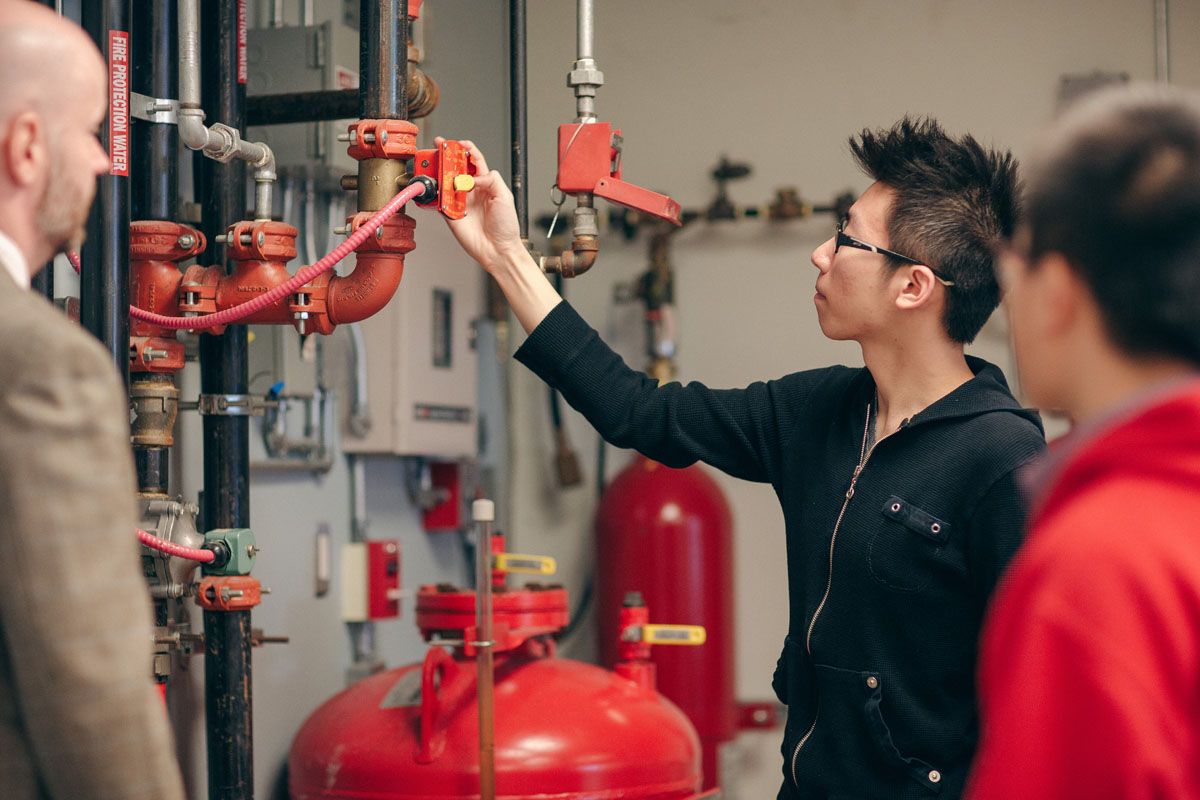Seneca’s Fire Protection programs are a North American benchmark in providing a comprehensive fire protection education combining the best aspects of both prevention and fire suppression.
Labs
Meet Fire Protection Faculty and Graduates
Programs
Certifications
As a Seneca Fire Protection Engineering Technician or Technology student, you can obtain the following certifications:
- CFAA from Canadian Fire Alarm Association
- C.E.T. (Certified Engineering Technologist) from Ontario Association of Certified Engineering Technicians and Technologists
- C.E.Tech. (Certified Engineering Technician) from Ontario Association of Certified Engineering Technicians and Technologists
- BCIN (Building Code Identification Number) from Ministry of Municipal Affairs and Housing
- NFPA certifications from Office of the Fire Marshal, IFSAC and ProBoard seal
- NFPA 472 Hazardous Materials Awareness
- NFPA 1031 Fire Inspector Level I and II
- NFPA 1033 Fire Investigator (for graduates hired by a fire department)
- NFPA 1035 Fire and Life Safety Educator Level I and II
- NFPA 1041 Fire Service Instructor Level I
- CRM (Canadian Risk Manager) from Canadian Risk Managers
- CIP (Certified Insurance Professional) from Certified Insurance Professionals
Please note: Certifications may require specific courses to be taken, specific grades to be achieved and may require an additional fee for the certification process. Some may require work experience before being finalized.
Benefits
Our industry-leading programs are driven by comprehensive curriculums that prepare you for highly competitive fields.
Pathways
Pathways are agreements that allow you to move from one program to another or one institution to another to further your education and obtain an additional credential. Click on the programs below to learn more about pathway options:
Work Experience
Work-integrated learning (WIL) opportunities provide you with hands-on experience before graduation. WIL options are outlined in the “Work Experience” section on each program page.
Transfer Credits
If you have completed equivalent courses from another postsecondary institution, you can apply for transfer credit through the Office of the Registrar.
News and Events
Annual live burn demonstration
Each fall, the School of Fire Protection Engineering Technology hosts a live burn demonstration at Newnham Campus, displaying the speed at which a fire can spread through a dorm room.

Fire Protection labs benefit from gift-kind donation
Support from industry helps Seneca’s fire protection students learn and train on the most up-to-date equipment, have access to industry experts and prepare to enter the workforce.
Read Fire Protection labs benefit from gift-kind donation story
Gallery










